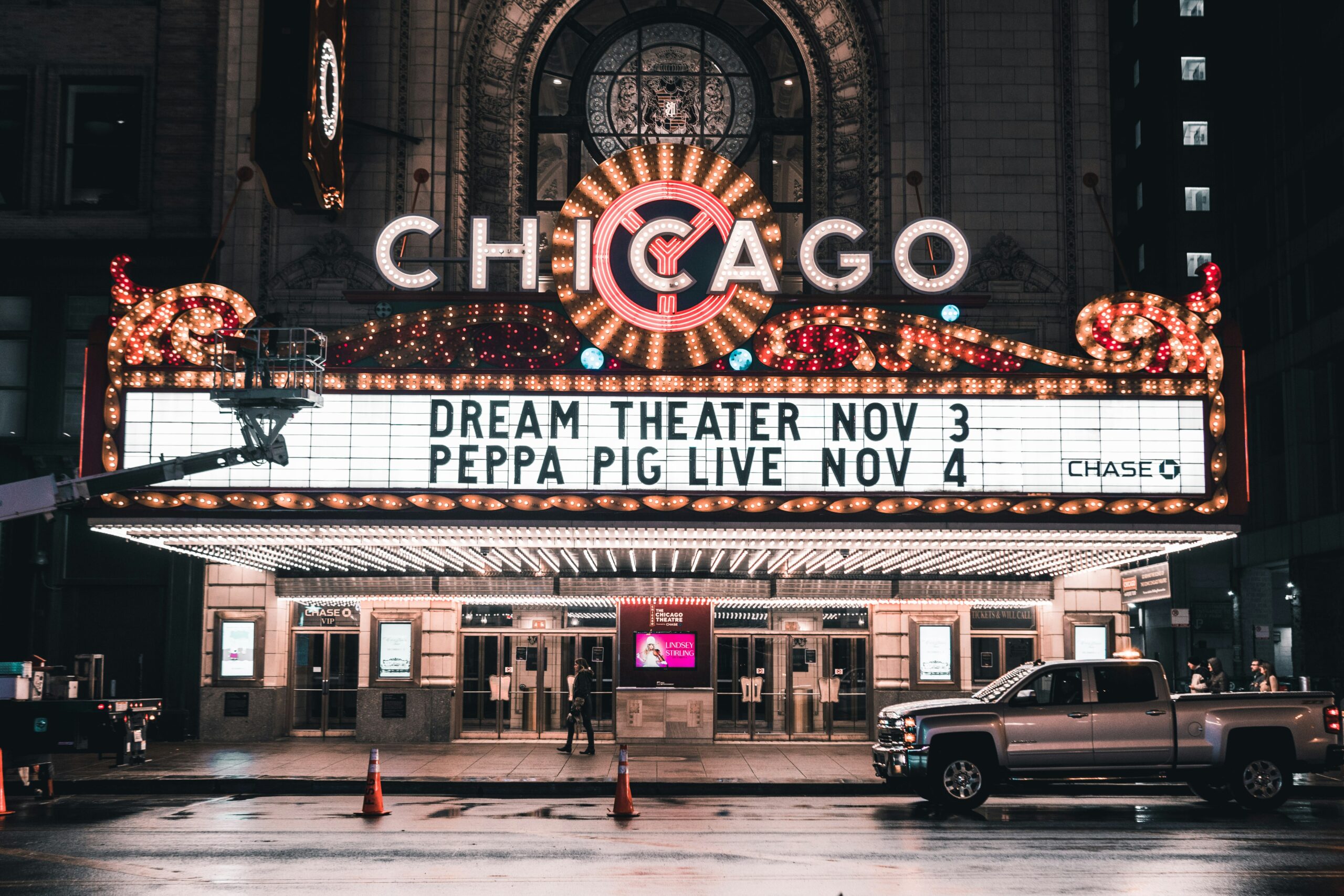Entertainment
Tori Spelling: Planning to Turn Miserable Summer into Reality TV Comeback? on August 29, 2023 at 4:07 pm The Hollywood Gossip

We’ve witnessed a lot during Tori Spelling’s Miserable Girl Summer.
After fleeing the family home this spring following a hazardous infestation, her marriage to Dean McDermott fell apart. And things had been going well!
Now she’s dealing with public embarrassment, a looming divorce, lingering health issues, and financial woes.
But could this also be her pathway back to reality TV? Reportedly, some of her friends dread this outcome. But why?
In 2023, Tori Spelling shared this sunny selfie while promoting her friend’s rose quartz jewelry. Gorgeous! (Instagram)
The report
According to a new report by RadarOnline, those close to Tori feel “worried” about her.
And not for the obvious reason.
Allegedly, sources in her oribt fear that she is “drumming up drama to pave her way back to reality TV.”
Once again at Urgent Care with her family, Tori Spelling shared photos to warn followers about the hidden dangers of mold. (Instagram)
Infested
Where did all of this allegedly start? Back at home. Well, at Tori and Dean’s former home.
The house that they were renting, it turned out, was slowly killing them.
We here at THG had followed the story of their mystery ailments and even hospitalizations for months, going back to 2022. The culprit turned out to be mold.
In this lengthy caption from May 2023, Tori Spelling shared her family’s story of repeated illnesses. The culprit? Dangerous mold in their home. (Instagram)
This wasn’t a case of one shower that needs bleach or vinegar (not both! never mix the two!). The infestation rendered the place unfit for human habitation.
If we had to speculate wildly (and we don’t, but we will for the moment), we’d note that mild earthquake damage and rainfall could do this. So could a leaky pipe in the wrong place.
Once Tori and her family understood the seriousness of the infestation, they fled their home.
Parents Tori Spelling and Dean McDermott pose with children Liam, Stella, Hattie, Finn, and Beau at the Beverly Hilton in June 2023. (Instagram)
Free at last?
Tori openly thanked renter’s insurance (always a good idea if you are renting; it is generally very affordable).
Many suspect that it was a payout from this that allowed her and her kids to stay at a $100-per-night motel.
It’s not glamorous lodgings, but it meant a roof over their family’s head until the dust settles and they find a new place.
Taking to her Instagram Story, Tori Spelling revealed that she and her family members need to undergo brain scans after living with an extremely hazardous mold infestation. (Instagram)
Unfortunately, this could cost them more than the comfort of living in their former abode.
Chronic mold exposure — and this was happening to them for many months, possibly even for years. — can cause lasting harm.
For some, symptoms can last for years or even for life. Tori knows this, and even indicated that she and her family will undergo screenings for lingering effects. (More on that, shortly)
Tori Spelling and Dean McDermott pose for portrait at the premiere of Warner Bros. Pictures’ “Paddington 2” After Party on January 6, 2018 in Los Angeles. (Getty)
Heartbreak
We did skip a step, however.
In between fleeing their family home and the first time that random eyewitnesses spotted Tori and kids at a motel, something happened.
For months, Tori and Dean had reportedly been doing surprisingly well in their marriage. The best that they’d been in years.
On June 17, 2023, Dean McDermott took to Instagram to announce his separation from Tori Spelling. That was very early on a Saturday morning. Hours later, he deleted the post. (Instagram)
Then, one random Saturday morning, Dean posted and deleted a breakup announcement on Instagram. Messy, much?
Deleting the post, the world soon learn, did not reflect a change in sentiment.
From what we’ve heard in numerous reports, Tori wanted to try to make it work. Dean did not. So, for now, it’s over.
In the family’s RV and temporary home, Tori Spelling cuddles up to her youngest son, Beau. August 2023 was a time of transition for their family. (Instagram)
Her own personal housing crisis
Tori was also on the hunt for a place to live. Not just for her, but for her five children.
As we saw in recent weeks, she moved into an RV and has been living on a campground.
An RV is way too small for six people. Her kids range from young Beau to actual teenagers. It’s simply not sustainable.
Tori Spelling shared this pic of her kids giving an apparent thumbs up to their August 2023 abode. (Instagram)
It’s possible that Tori and her kids have moved on from there.
Reportedly, they were treating the stay there like a “vacation” ahead of the school year picking up again.
Hopefully, something more sustainable and comfortable for everyone has come along. Tori was, after all, previously looking for a one-month rental.
Somehow, illness has returned
We mentioned that Tori’s fungal foe was not done with her. Because, months after fleeing the family home, she recently spent days in the hospital.
Tori left the hospital after four days. We do not know the cause of her hospitalization. Clearly, it was something serious.
However, reports have suggested that doctors believe that mold may have been the cause. Chronic exposure, as we said, can have lasting consequences.
Tori Spelling shared this outdoor selfie in April of 2023. (Instagram)
About the reality TV thing …
We can’t say that we think that Tori is somehow deliberately masterminding all of this as a ploy to return to reality TV.
It seems more likely that she’s just having a really miserable summer. And that she had a rough spring before that. And autumn isn’t looking too bright (and it’s only weeks away).
But wouldn’t it actually be a great thing for her if this turned into a reality TV comeback? It might be a good thing for us, too. Tori could entertain the world and get the funding to repair (parts of) her life in the process.
Tori Spelling: Planning to Turn Miserable Summer into Reality TV Comeback? was originally published on The Hollywood Gossip.
We’ve witnessed a lot during Tori Spelling’s Miserable Girl Summer. After fleeing the family home this spring following a hazardous …
Tori Spelling: Planning to Turn Miserable Summer into Reality TV Comeback? was originally published on The Hollywood Gossip.
The Hollywood Gossip Read More
Advice
How to Create Unforgettable Movie Scenes

Introduction: The Anatomy of an Iconic Scene
Unforgettable scenes linger in our minds, resonating long after the credits roll. What makes them stand out? It’s a masterful blend of direction, acting, cinematography, editing, and sound design. These elements work harmoniously to evoke emotion, drive the narrative, and leave an indelible mark on audiences. In this article, we’ll analyze key aspects of iconic scenes and uncover the secrets behind their timeless appeal.
1. Direction: Vision and Execution
The director sets the tone, mood, and vision for the scene. Iconic sequences often reflect the director’s unique style or storytelling approach.
- Case Study: Pulp Fiction (1994) – The “Royale with Cheese” scene.
Quentin Tarantino’s sharp dialogue and deliberate pacing turn an ordinary conversation into a memorable moment. The seemingly mundane dialogue deepens character relationships and sets the tone for the movie.
Takeaway: A clear vision paired with intentional direction ensures that every element serves the story.
2. Acting: Authenticity and Nuance
Great performances breathe life into a scene. Actors convey emotion through expressions, tone, and body language, creating a connection with the audience.
- Case Study: The Godfather (1972) – Michael Corleone’s transformation in the restaurant.
Al Pacino’s subtle expressions convey internal conflict as Michael transitions from a reluctant family member to a calculated leader.
Takeaway: Focus on casting and rehearsing to bring authentic, nuanced performances to your scenes.
3. Cinematography: Visual Storytelling
The framing, lighting, and camera movements guide the viewer’s emotions and enhance the scene’s impact.
- Case Study: Blade Runner 2049 (2017) – The orange-hued Las Vegas.
Roger Deakins’ cinematography immerses viewers in a dystopian world, using bold color and light to evoke a sense of desolation and mystery.
Takeaway: Use cinematography as a storytelling tool, not just a visual aid.
4. Editing: Pacing and Rhythm
Editing determines the flow of a scene, balancing tension and release to maintain engagement.
- Case Study: Whiplash (2014) – The final drum solo.
Quick cuts between Andrew and Fletcher amplify the intensity, culminating in a cathartic release.
Takeaway: Ensure that editing aligns with the scene’s emotional beats and narrative progression.
5. Sound Design: Enhancing Atmosphere
Music, sound effects, and silence heighten emotion and immerse the audience.
- Case Study: Jaws (1975) – The shark’s approach.
John Williams’ iconic score builds dread, using tension-filled notes to signal the shark’s presence.
Takeaway: Sound design should complement the visuals and underscore the emotional core of the scene.
Conclusion: Crafting Your Perfect Scene
Unforgettable scenes are a synergy of art and technique. By studying the interplay of direction, acting, cinematography, editing, and sound, filmmakers can create moments that resonate with audiences. Whether you’re telling an intimate story or crafting a blockbuster, focus on the details that elevate your scenes from good to iconic.
Bolanle Media is excited to announce our partnership with The Newbie Film Academy to offer comprehensive courses designed specifically for aspiring screenwriters. Whether you’re just starting out or looking to enhance your skills, our resources will provide you with the tools and knowledge needed to succeed in the competitive world of screenwriting. Join us today to unlock your creative potential and take your first steps toward crafting compelling stories that resonate with audiences. Let’s turn your ideas into impactful scripts together!
Advice
Reinventing Genres: Tips for Filmmakers

Genres offer filmmakers a blueprint for storytelling, but they can also become predictable if followed too rigidly. To stand out and captivate modern audiences, filmmakers increasingly experiment with genre conventions, blending or subverting established norms to deliver fresh and surprising experiences. However, breaking the mold comes with its own set of challenges. Here’s how you can navigate the evolution of genre to create something truly original.
1. Understand the Rules Before Breaking Them
Before subverting genre conventions, you need a deep understanding of them. Audiences have expectations tied to genres—romances promise emotional connections, while horror builds tension and fear. Knowing these tropes allows you to decide which to keep, tweak, or completely upend to create impactful surprises.
Actionable Tip: Study successful genre films to identify their core conventions. For instance, in horror, the “final girl” trope often symbolizes survival. If you’re creating a horror film, consider flipping the trope by making the “final girl” the antagonist.
2. Blend Genres to Add Depth
Blending genres is an effective way to challenge expectations while broadening a story’s appeal. Films like Get Out seamlessly mix horror and social commentary, while Shaun of the Dead combines comedy with zombie horror. These hybrids resonate because they respect the essence of each genre while delivering something unexpected.
Actionable Tip: Identify the emotional beats of your primary genre, then layer in secondary elements. For instance, a drama can incorporate sci-fi elements to explore human relationships in a futuristic setting, like Her did.
3. Subvert Character Archetypes
Audiences often anticipate specific character types within genres, such as the heroic protagonist in action films or the wise mentor in fantasy. Subverting these archetypes can result in compelling narratives. For example, Knives Out turns the classic whodunit genre on its head by revealing key plot points early, making the journey more about “why” than “who.”
Actionable Tip: Write character profiles for your leads and supporting cast, then challenge their roles. Can the villain be sympathetic? Could the mentor be unreliable? By defying expectations, you add complexity and intrigue.
4. Leverage Visual and Tonal Shifts
Genres often carry distinct visual and tonal markers—romantic comedies are bright and cheerful, while noir is dark and brooding. Playing with these elements can surprise audiences and enrich your narrative. For example, Parasite starts as a dark comedy but shifts into thriller territory, creating an emotionally charged experience.
Actionable Tip: Experiment with lighting, color palettes, and sound design to transition between tones or disrupt visual expectations. A colorful, vibrant world juxtaposed with a dark storyline, like in Jojo Rabbit, can create a striking contrast.
5. Balance Risk and Reward
Subverting genre expectations is a bold move, but it risks alienating audiences who expect familiarity. The key is to maintain a balance: innovate while staying true to the core emotional journey that the genre promises. For example, Mad Max: Fury Road redefined action films by focusing on relentless momentum while keeping the stakes and emotional arcs clear.
Actionable Tip: Test your story with trusted collaborators or small audiences. Gauge their reactions to ensure your subversions enhance the experience rather than confuse or frustrate viewers.

6. Reinvent Timeless Themes
While genres evolve, their core themes—love, fear, ambition, or survival—remain timeless. By addressing these universal themes in innovative ways, you can create works that feel fresh yet deeply relatable. A film like The Shape of Water reinvents the romance genre by pairing a mute woman with an amphibious creature, blending fantasy with profound emotional depth.
Actionable Tip: Start with a universal theme, then brainstorm unique ways to explore it. For example, instead of a typical hero’s journey, could your story revolve around a collective effort or an antihero’s quest?
7. Learn from Genre Masters Who Break the Mold
Many groundbreaking filmmakers have pushed genre boundaries, creating new storytelling paradigms. Directors like Jordan Peele, Bong Joon-ho, and Greta Gerwig challenge conventions without losing sight of the emotional core of their stories. Studying their techniques can inspire your own creative choices.
Actionable Tip: Analyze a few genre-bending films and dissect how they challenge norms. What tropes did they keep or discard? How did they maintain emotional resonance while experimenting? Apply these insights to your project.
Final Thoughts: Evolving Genre with Purpose
Subverting or blending genres isn’t about discarding traditions—it’s about evolving them to reflect contemporary sensibilities. By understanding the essence of genres and pushing their boundaries thoughtfully, you can craft stories that surprise, engage, and resonate deeply with audiences. The key is to innovate without losing sight of the emotional truths that make genres timeless.
Bolanle Media is excited to announce our partnership with The Newbie Film Academy to offer comprehensive courses designed specifically for aspiring screenwriters. Whether you’re just starting out or looking to enhance your skills, our resources will provide you with the tools and knowledge needed to succeed in the competitive world of screenwriting. Join us today to unlock your creative potential and take your first steps toward crafting compelling stories that resonate with audiences. Let’s turn your ideas into impactful scripts together!
Advice
Screenwriting Tips for Aspiring Filmmakers

The art of screenwriting is about more than just telling a story—it’s about crafting an experience that resonates with audiences long after the credits roll. For aspiring screenwriters, standing out in a crowded field requires more than just a good idea; it demands structure, memorable characters, authentic dialogue, and a unique approach to storytelling. Here’s a guide to creating a screenplay that doesn’t just tell a story but makes a lasting impact.
1. Master the Structure but Add Your Twist
The backbone of any screenplay is its structure. While three-act structures are traditional, experimenting with structure can set your screenplay apart. Understand the basics—setup, confrontation, and resolution—but don’t be afraid to subvert these conventions. Maybe your story begins with the climax or uses a circular narrative.
Actionable Tip: Outline your script with the three-act structure in mind, but consider starting with a bold event, jumping timelines, or intertwining multiple storylines. Just ensure these choices serve the story rather than distracting from it.
2. Craft Dynamic and Relatable Characters
Characters are the heart of any story, and memorable ones are essential for a screenplay that stands out. Audiences connect with characters who feel real, even if they are fictional. Strive to create characters with depth, personal motivations, and growth arcs. Each character should have a unique personality, with specific desires, flaws, and challenges.
Actionable Tip: Develop backstories and motivations for each main character, even if they don’t make it onto the page. Write character profiles to understand their personalities and how they would react in different situations. Give them qualities that make them relatable yet complex.
3. Write Authentic, Engaging Dialogue
Dialogue is a powerful tool in screenwriting, conveying not only information but also character personality and emotion. Realistic dialogue should sound natural, yet every line should have a purpose—whether it’s moving the plot forward or revealing something about a character. Avoid expositional or “on-the-nose” dialogue where characters state things that the audience can already infer.
Actionable Tip: Read your dialogue out loud to check its flow and realism. Consider how each character would uniquely phrase their words based on their background, goals, and emotional state. Use subtext to create layers—let the audience read between the lines for deeper meaning.
4. Focus on Creating a Unique Concept
To break through the noise, your screenplay must have a fresh concept. While universal themes like love, loss, or redemption appeal to audiences, finding a unique angle on these ideas will make your script stand out. Think about what sets your story apart from others in the genre, whether it’s an unexpected twist, a novel setting, or a perspective that hasn’t been explored.
Actionable Tip: Start by identifying a core theme or concept that fascinates you, then brainstorm ways to twist it. Ask yourself questions like, “What if this happened instead?” or “How can I show this from a new angle?” and incorporate these ideas into your screenplay’s premise.
5. Show, Don’t Tell
Screenwriting relies heavily on visual storytelling. Rather than using dialogue or narration to explain key points, aim to show them through action and imagery. This approach not only respects the visual medium of film but also engages the audience, allowing them to interpret and connect with the story on a deeper level.
Actionable Tip: Identify places in your script where information is conveyed verbally and see if it can be shown instead. For example, rather than having a character say they’re feeling lonely, show them standing alone in a crowd or staring at an empty room. Visual cues can say much more than words.
6. Keep the Pacing Tight
A well-paced screenplay keeps readers (and viewers) engaged. Avoid unnecessary scenes or dialogue that don’t serve the story. Instead, make each scene count by moving the plot forward or deepening character development. Fast-paced scenes should build tension, while slower moments should provide meaningful insight into the characters or themes.
Actionable Tip: Revisit your scenes with a critical eye. Ask yourself, “Does this scene advance the plot or character arc?” If the answer is no, consider cutting it or combining it with another scene. Aim for brevity without sacrificing clarity or impact.
7. Polish, Revise, and Seek Feedback
Once your screenplay is complete, the real work begins. Revising your script will help catch any inconsistencies, improve flow, and refine dialogue. Don’t be afraid to make big changes during this process. After multiple drafts, seek feedback from trusted peers or industry professionals to get an objective perspective on what’s working and what isn’t.
Actionable Tip: Set your script aside for a few days before revising, allowing you to approach it with fresh eyes. When seeking feedback, ask specific questions, like whether characters felt authentic or if the pacing seemed smooth. Use this feedback to fine-tune and polish your work.
8. Find Your Voice and Trust It
Your unique perspective is one of the most valuable assets you bring to your screenplay. Develop a voice that reflects your personality, values, and observations about the world. Rather than imitating popular films or trends, tell stories that genuinely resonate with you. Authenticity will make your screenplay distinct and memorable.
Actionable Tip: Identify themes and story elements that you’re passionate about, and incorporate them into your work. Pay attention to the tone of your writing—whether it’s dark, humorous, or poignant—and ensure it feels consistent throughout. Trust your instincts and believe in the value of your own voice.
Final Thoughts: Standing Out with Substance
Writing a standout screenplay is about more than following formulas or flashy plot twists. It’s about creating a narrative that feels authentic, grounded, and impactful. By focusing on structure, character depth, unique concepts, and refining your work through revision, you can craft a screenplay that doesn’t just stand out but also resonates. Whether you’re submitting to festivals, agents, or production companies, a well-crafted, original screenplay is your best asset in breaking through the noise.
Bolanle Media is excited to announce our partnership with The Newbie Film Academy to offer comprehensive courses designed specifically for aspiring screenwriters. Whether you’re just starting out or looking to enhance your skills, our resources will provide you with the tools and knowledge needed to succeed in the competitive world of screenwriting. Join us today to unlock your creative potential and take your first steps toward crafting compelling stories that resonate with audiences. Let’s turn your ideas into impactful scripts together!
-

 News3 weeks ago
News3 weeks agoThe Hemp Village’s Inaugural Brunch: A Celebration of Resilience and Community Spirit
-

 Advice3 weeks ago
Advice3 weeks agoHow Community Engagement Ignites Cultural Phenomena
-

 Advice4 weeks ago
Advice4 weeks agoThe Hidden Magic in Messing Up
-

 Advice29 minutes ago
Advice29 minutes agoHow to Create Unforgettable Movie Scenes
-

 Advice58 minutes ago
Advice58 minutes agoReinventing Genres: Tips for Filmmakers
-

 Advice1 week ago
Advice1 week agoA Reality Check for Aspiring Filmmakers
-

 Advice22 hours ago
Advice22 hours agoScreenwriting Tips for Aspiring Filmmakers
-

 Advice1 week ago
Advice1 week agoThe 1% Club: Breaking Into the Elite Circle of Sold Screenplays






